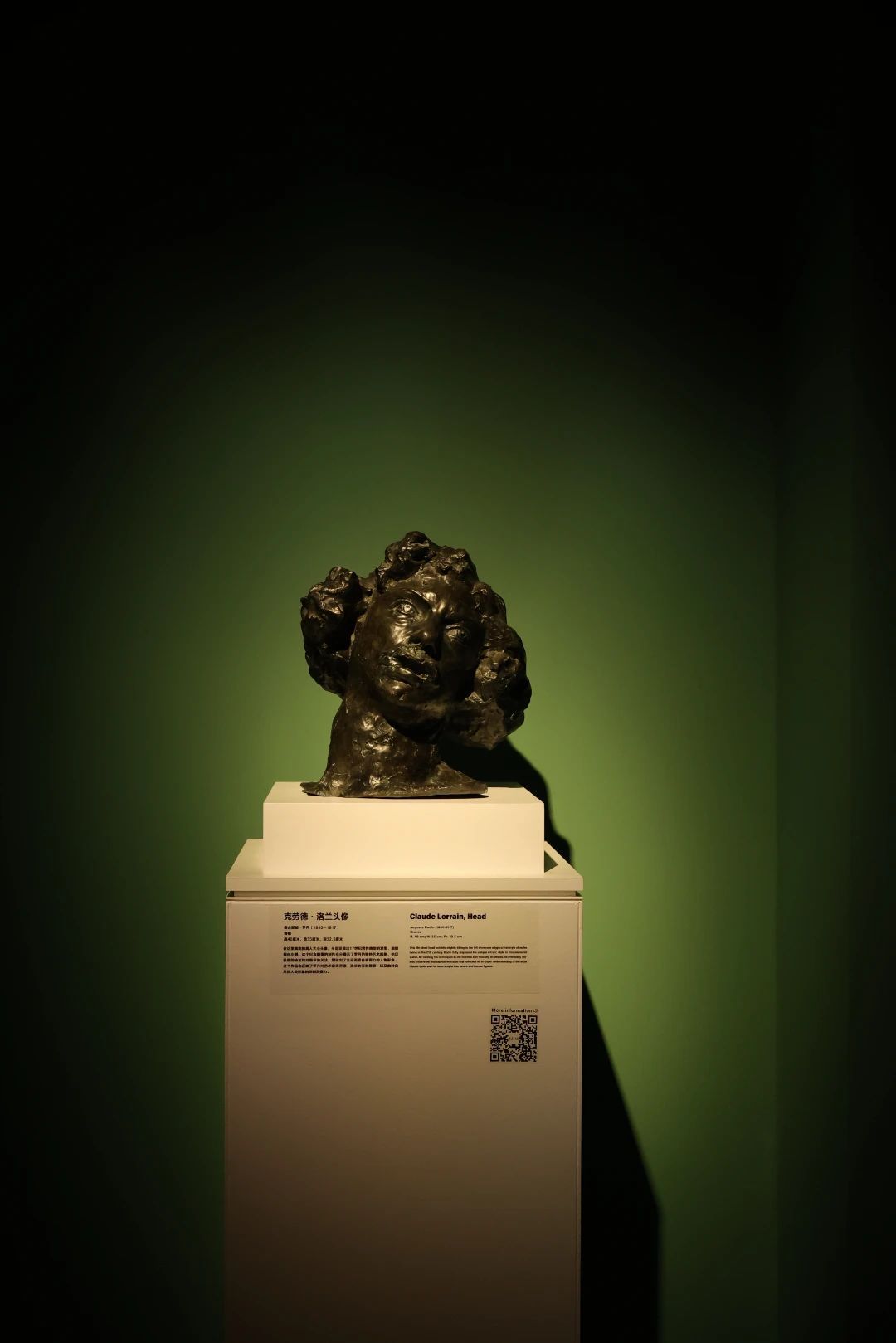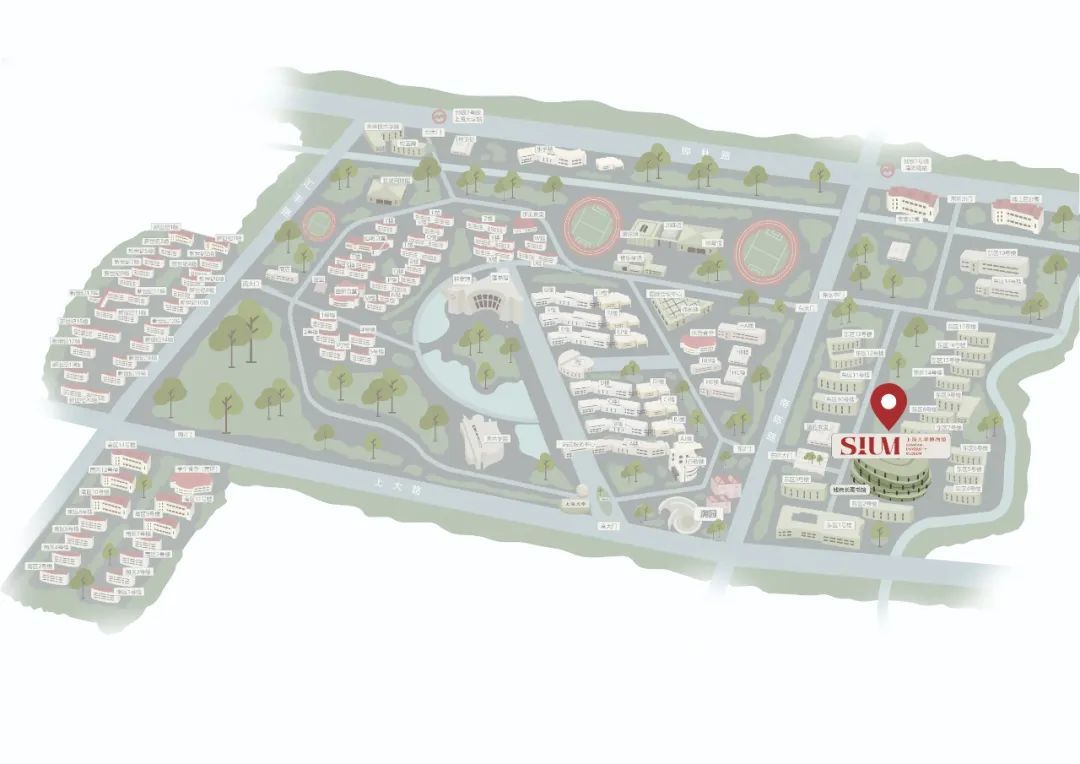· 商代後期(公元前1300年—前1100年)
· 高34厘米,橫徑20.5厘米🗾,縱徑18.5厘米
· 2022年出土於四川廣漢三星堆遺址八號祭祀坑🙅♂️,K8⑨:684
· 四川省文物考古研究院藏
· Late Shang Dynasty (1300B.C. - 1100B.C.)
· H.34cm; Horiz Dia.20.5cm; Vert Dia.18.5cm
· Unearthed from No. 8 sacrificial pit at the Sanxingdui Site in Guanghan, Sichuan, in 2022,K8⑨:684
Collection of Sichuan Provincial Cultural Relics and Archaeology Research Institute
圓頂笄發,頭頂渾圓,頭發與面部界限分明。長臉寬頤,臉龐瘦削,寬眉大眼,眼角上挑👼🏿,顴骨略凸,蒜頭鼻🧘🏻,鼻翼較寬👨🏼⚕️,闊口緊閉,嘴角下勾🥹,神情肅穆🏌🏽♂️。大耳外張,耳廓飾有卷雲紋,耳垂各有一穿孔,可能用於懸掛耳環之類的裝飾品。頸較粗🤹🏻♂️,頸下端前呈倒尖角形,後呈圓弧形🍐。頭頂後方有一方孔,其下有“U”形輪廓🙌🏼。
該造型的青銅人頭像與平頂辮發造型的青銅人頭像風格迥異,它們與立發😛、高冠等青銅人頭像🛑,共同構成了古蜀文明不同地位、不同階層的人在祭祀場景中的群像。
The bronze head has a round top and clear hairlines, with hair coiled up with a Ji (笄, hairpin). It has a long face, a wide cheek, slender cheeks, thick eyebrows, large eyes with upward slanting corners, prominent cheekbones, a bulbous nose with a wide nasal wing, and a tightly closed large mouth with hooked corners, showing a solemn expression. The ears are large and spread outward, decorated with Juanyun Wen (卷雲紋,curling-cloud pattern) on the outer part. There is a perforation on each earlobe, possibly for hanging earrings or other ornaments. The neck is relatively thick. Its front part has an inverted triangular edge, while its back part has a circular edge. There is a hole at the back of the head.
The style of this bronze human-head statue differs significantly from that with flat-top braided bronze human head. Bronze human-head statues of various styles, including those with towering hair and high crown, represent different social statuses and classes in the sacrificial scenes of the ancient Shu civilization.
克勞德·洛蘭頭像

· 奧古斯都·羅丹(1840—1917)
· 青銅
· 高40厘米,寬35厘米,深32.5厘米
· Auguste Rodin (1840-1917)
· Bronze
· H.40cm; W.35cm; Pr.32.5cm
在1888年,奧古斯都·羅丹接受了南希市委托,開始為著名古典風景畫家克勞德·熱萊(Claude Gellée,1600—1682)設計一座紀念雕像。克勞德·熱萊更為人熟知的名字是克勞德·洛蘭(Claude Lorrain)🧑🏻🦼➡️💆🏻,以其卓越的風景畫技藝而著名,尤其擅長描繪大自然景觀⚛️♣︎,如河流、山脈和日落等。
他的作品通常呈現柔和的色彩和浪漫主義的氛圍,被認為是巴洛克時期最偉大的風景畫家之一。為了這個紀念雕像,羅丹投入了數年的創作時間。他像往常一樣🕛👨🦰,首先進行了裸體人物形象的研究🔕,然後才著手創作整體雕像,先雕刻出人體不同部位的雕塑,再將這些雕塑鑄成青銅件。例如✨,在這裏展出的真人大小頭像,頭部呈現出17世紀男性典型的發型,稍微偏向左側。這個頭像本身是在1890年至1891年期間創作的🙍🏿♀️,後來由羅丹天美平台委托E.Godard澆鑄廠製成青銅版本,使用失蠟法技藝。在人物的脖子處,可以看到A.Rodin的簽名,而左肩上帶有澆鑄廠的標記E.Godard Fondr。
這個紀念雕像的創作充分展示了羅丹的獨特藝術風格,他以極致的技藝和對細節的關註🤽🤘,塑造出了生動而富有表現力的人物形象👨🏻🌾🫷。這個作品也反映了羅丹對藝術家克勞德·熱萊的深刻理解,以及他對自然和人類形象的深刻洞察力。
In 1888, commissioned by the city of Nancy (Meurthe et Moselle), Rodin started the design of a memorial statue for Claude Gelée. Also known as Claude Lorrain (1600-1682), Claude Gelée was celebrated for his exceptional landscape painting skills, particularly his depiction of natural landscape such as rivers, mountains, and sunsets. His works are usually imbued with gentle colors amid a romantic atmosphere, and he was hailed as one of the greatest landscape painters of the Baroque period.
Rodin devoted several years to the creation of this memorial statue. As he did for other works, Rodin researched nude figures before sculpting the overall work. He sculpted different body parts and had them cast into bronze pieces. For example, this life-sized head exhibits slightly tilting to the left showcase a typical hairstyle of males living in the 17th century. It was created in 1890-1891, and was later cast into a bronze sculpture by Godard Foundry under the commission of Rodin Museum with the lost-wax method. Rodin’s signature, “A. Rodin”, was cast on the neck, and the foundry’s name, “E. Godard Fondr”, was on the left shoulder.
Rodin fully displayed his unique artistic style in this memorial statue. By exerting his techniques to the extreme and focusing on details, he eventually created this lifelike and expressive statue that reflected his in-depth understanding of the artist Claude Gelée and his keen insight into nature and human figures.
展覽時間:
2023年12月13日至2024年2月1日
展覽地點:
天美平台一層臨展廳
(上海市寶山區南陳路333號)
開放時間✤:
周一至周日8:30-16:30(16:00停止入館)
校內師生憑本人一卡通入館,無需預約。
校外觀眾采取網上預約方式入館🧑🏼🍳,掃描下方二維碼或關註“天美平台”微信公眾號,點擊“個人預約”🤷🏼♀️。

/地址/
上海大學博物館
(南陳路333號)
